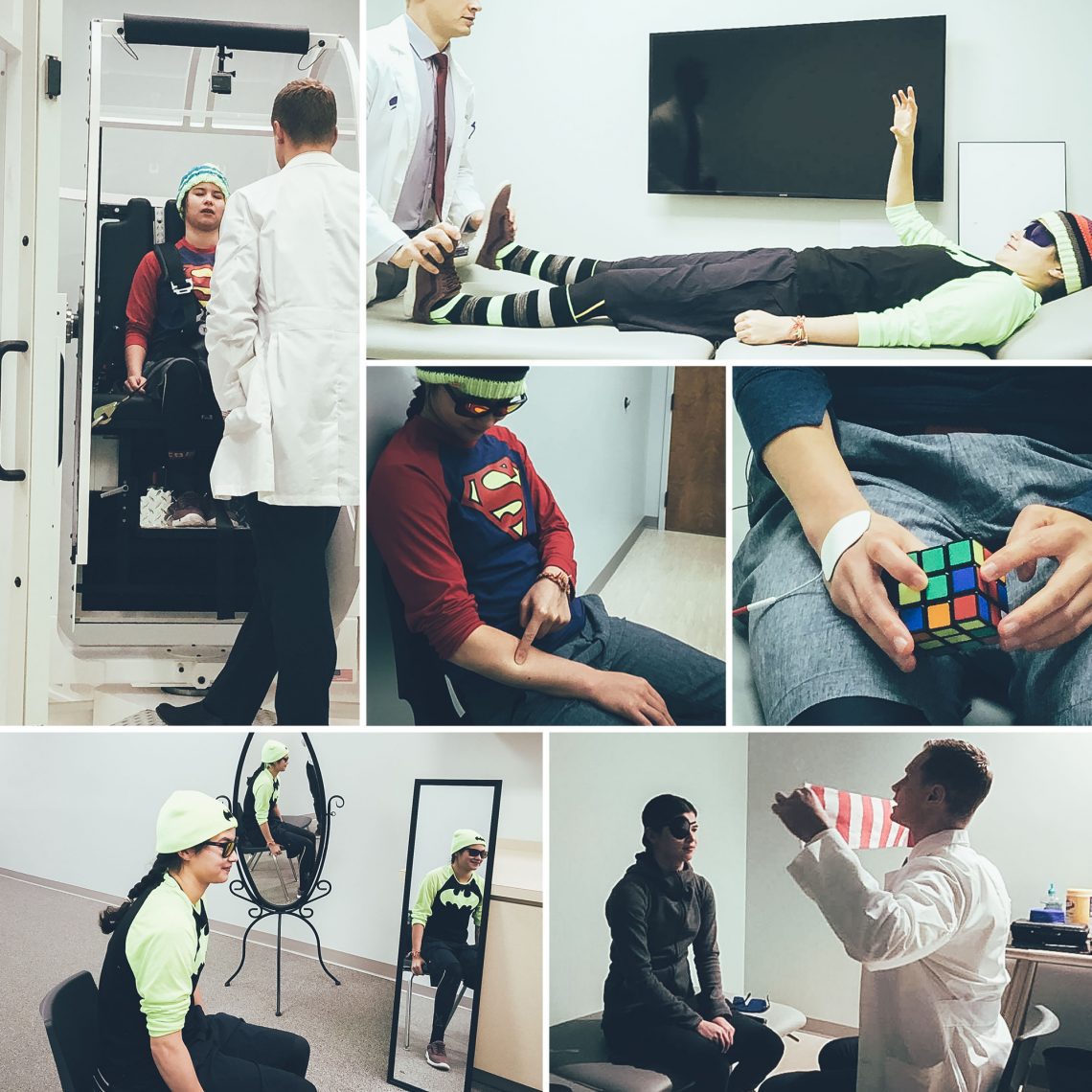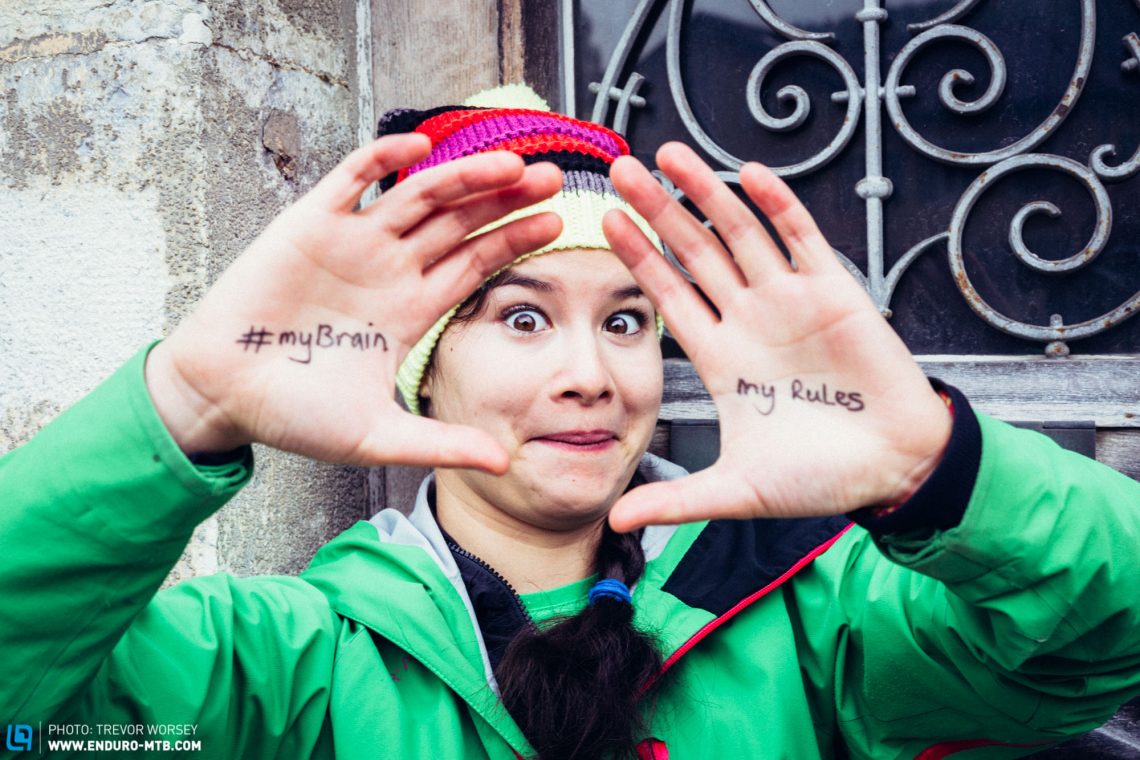Lorraine Truong – Rehab, Recovery and Superheros

Last November, we sat down with elite BMC racer Lorraine Truong, a fallen rider struggling with the very real effects of a serious brain injury sustained while racing.
Lorraine’s story touched us all, an honest and open account of determination, frustration, desperation and fear. However, from sadness came inspiration and hope from the MTB riding community as they rallied in support, donating over €40,000 to send Lorraine to the US for some radical treatment in a pioneering brain rehabilitation clinic. Those watching her Instagram channel saw videos of her being tested, challenged and even spun upside down in huge machines, like a NASA test pilot. Lorraine, being Lorraine, showed her resolve by dressing in various superhero costumes throughout. We thought it was time to find out how she is doing.

The mountain biking community is a tight one, quick to assist someone who needs it, from lending out an inner tube, to donating to those who need more help. Lorraine was quick to point out how important the support has been to her. “The fundraiser was the idea of some of my friends and I am thankful beyond belief for all the people who supported me through this. We raised over 42’000 swiss francs but also received loads of positive messages which help me through this and makes me realise how many people care about me. I’ve been particularly touched by this family whose kids decided to do a second donation instead of buying Christmas cards. Even though the raffle is now over the support is still alive as the money raised will amazingly allow me to go back to the US this March for more treatments.”
Anyone who has had an injury knows that rehab is never fun, but we cannot imagine how much harder that is with an injury to the brain.“ To be honest, the first word that comes to my mind is “hard”. Being in a rehab facility is never easy, but this time was particularly difficult for me. First, there was a mental wall to overcome: rehab again. I’ve been through it so many times already, trying to give my best but feeling like I am not getting anywhere. Why would I be doing it again? I felt too exhausted and weak to go through it.
Then there are the treatments themselves. From the first day, they were pushing me way out of any kind of comfort zone. I don’t really have the words to describe how simple treatments had the power to send me so far away from who I am that I couldn’t talk or move. It was like being trapped in darkness, knowing that you exist, without being able to be. I found it deeply frightening.

Fortunately, there was one thing that changed it from being just hard to being hard but proudly done: the people. First, there is Lucy. She volunteered to accompany me from Switzerland to the US and at all the rehab sessions. She was there every morning to get me up and ready for a new day of treatment (and I can tell you it wasn’t any easy job!) and every evening to feed me or put me to bed when I wasn’t able to myself. She was there to make the weirdest moment funny, to make sure I was safe when I was out of my mind and to keep me company in the saddest time. The whole treatment wouldn’t have been possible without her and I am thankful far beyond what I could express.
And second, there was my Doc, Dr. Keiser. He worked his best to give me the treatment that would help me the most, but that I could handle. He cheered me on session after session, telling me I was doing great despite my certainty that I was rubbish. He is an amazing example of what a mixture of kindness and intelligence can produce. I was the centre of our work together, not his certainty, ego or success. But me his patient.
So yes, this first treatment in the US was truly hard and sometimes almost unbearable. In the evening I often wondered how I could go back the day after. But thanks to the people around me, I did it, we did it. And we will do it again in the future.”

When we asked what the treatment involved, Lorraine expanded. “It’s difficult to describe how the treatment was. What I can say is that it was more ‘precise’ than anything I had done so far. Instead of trying globally to raise my cognitive and physical abilities the Doc focused on working simple tasks my brain wasn’t able to achieve, in order to help it rebuilt some regions of my brain. So a session could go from looking at a moving target to walking in the corridor. It could mean tapping on my tendons or touching my face with a soft tissue. A big part of it was getting some control over my right side, getting my brain to recognise it and knowing where its boundaries are, but mainly it was all about firing precise input into some parts of my brain.”
While Lorraine has come to terms with the fact that this will be a long battle, we were almost nervous to ask how she is feeling now, but as always with Lorraine, she was open and honest and ultimately determined. “It is difficult to answer this question. All I can say is that there are definitely changes. I have been really tired for about a month since the treatment so it is only lately that changes have happened in a way I can notice. It is not exactly the changes you might hope for. So far I am not much more able to do normal things than I was before.
I don’t know how to explain. For example having pain in my right side is somehow a good thing, because it means that nerves are firing. However, it’s a bit more difficult to see it like that when it keeps me awake the whole night. In the same way, I have wild outbursts of energy when I am simply out of control. My thought process, motion control and emotions are just… strange. That’s definitely a change, but one I wouldn’t like to stick around too long. But hopefully these changes will bring more normal progress over time and the next visit to the rehab clinic will help the whole process!”
We are super happy to see Lorraine moving forward and pushing in the right direction. If you want to help Lorraine further you can help by following her instagram at @lorrainetruong or donate to her fundraising page.
If you missed her full story you can read it hear.
Did you enjoy this article? If so, we would be stoked if you decide to support us with a monthly contribution. By becoming a supporter of ENDURO, you will help secure a sustainable future for high-quality mountain bike journalism. Click here to learn more.
Words: Photos: Trev Worsey and Lucy Martin







